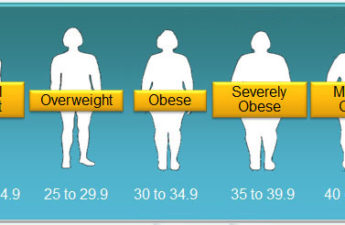 New data, new insight about the health of our region
New data, new insight about the health of our region
A new report by a collaborative of 11 hospitals and health systems, in partnership with Public Health – Seattle & King County, provides insight into some of the most relevant health issues impacting our local communities.
The new report, 2018/2019 King County Community Health Needs Assessment (CHNA) by The King County Hospitals for a Healthier Community (KC HHC) and Public Health features data on more than 40 indicators, including life expectancy, leading causes of death, and levels of chronic illness, as well as themes that emerged from 45 sources, including additional community needs assessments, strategic plans, and reports.
The 2018/2019 CHNA report also includes a spotlight on the health of lesbian, gay, bisexual, transgender, and queer (LGBTQ) communities of King County. Look for an upcoming blog post with key insights from the spotlight.
What’s getting better across King County?
Data from the report found several ways health is improving in our region. Three successes stand out:
- Health insurance coverage has improved dramatically since implementation of the Affordable Care Act – for all ages, racial/ethnic groups, and cities. Public Health’s outreach team has been critical in helping people get enrolled.
- Cigarette smoking – the leading preventable cause of death in the United States – has declined for youth and adults across all regions and for most racial/ethnic groups. However, use of e-cigarettes or vape pens by youth was higher in 2016 than 2012. Our secret shopper program is just one way we’re helping keep numbers down.
- Fewer students in the 8th, 10th, and 12th grades are drinking sugar-sweetened beverages daily. Thanks to policy and support from leadership, we expect this trend to continue.
What caught our attention
A key benefit to conducting a Community Health Needs Assessment is the opportunity to shine a light on potential impacts of growth, economics and housing on our population’s health. The data provides critical information on emerging health concerns that can inform action by policy makers, Public Health, researchers, hospitals, community organizations and the private sector.
- Fewer than 1 in 4 adults and youth get the recommended amount of exercise. This represents no change for adults, and modest but inadequate improvement for 8th, 10th, and 12th
- Overall obesity rates have been flat for several years – among adults and youth.
- By 2016, participation in the Basic Food program (formerly food stamps) and visits to King County food banks had not returned to pre-recession levels and were increasing for older adults.
- Student homelessness has more than doubled since 2008 to more than 8,400 students in the 2015-16 school year. In addition, the 2017 Point-In-Time Count identified 11,643 individuals experiencing homelessness, half of whom had one or more disabling conditions.
- Youth depression has increased, with 30% of adolescents reporting that they felt so sad or hopeless that they stopped doing some of their usual activities.
- Between 2010 and 2016, drug-related deaths, especially those related to heroin and methamphetamine, increased dramatically.
Want to know more about how to use the data?
To supplement the report’s findings, the Community Health Indicators (CHI) website offers interactive, online data dashboards with full analyses of the report indicators, plus more than 110 additional indicators.
PHSKC is offering trainings on how to most effectively use the Community Health Indicator (CHI) data dashboards to support program planning and outreach – please contact jhsu@kingcounty.gov for details.
More about King County Hospitals for a Healthier Community (KC HHC)
The King County Hospitals for a Healthier Community (KC HHC) is a collaborative of 11 King County hospitals and health systems including: Evergreen Health, CHI Franciscan Health, Kaiser Permanente, MultiCare Health System, Navos, Overlake Medical Center, Seattle Cancer Care Alliance, Seattle Children’s, Swedish Medical Center, UW Medicine, and Virginia Mason with the support of the Washington State Hospital Association. KC HHC works in collaboration with Public Health – Seattle & King County (PHSKC) to leverage their expertise and resources to identify and address the most critical health needs in King County.


